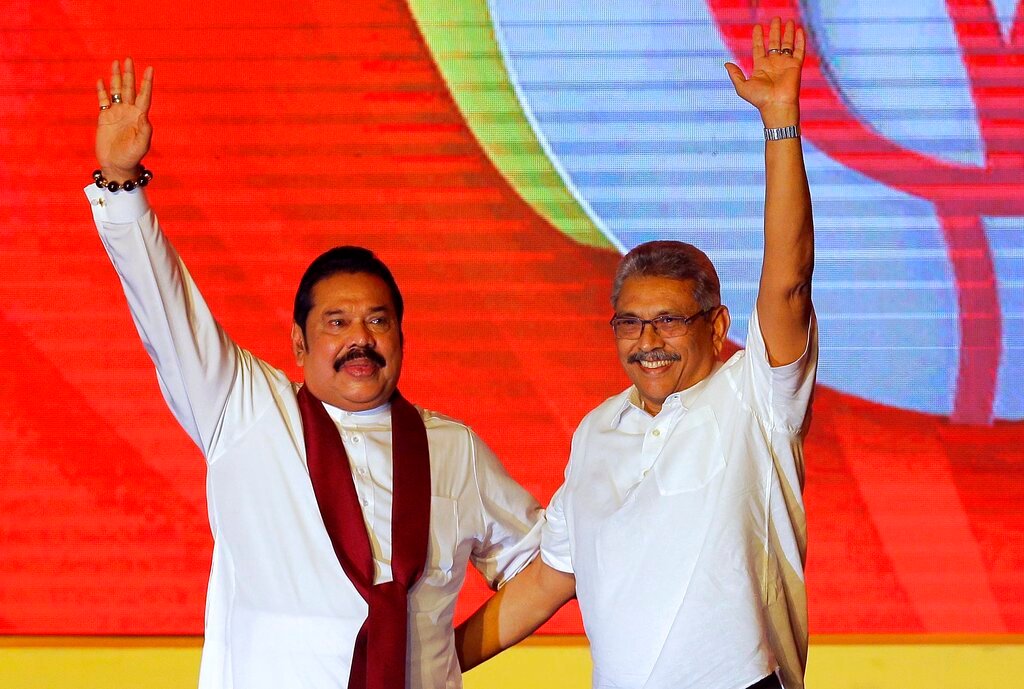The Man who was called Sri Lanka’s “War Hero” for his role in ending the conflict with the LTTE with the death of its chief V Prabhakaran in 2009 – Gotabaya Rajapaksa – has won the Battle for Sri Lanka a decade later. The younger brother of former Lankan president Mahinda Rajapaksa, will be the new President of the Island Nation. He was the defence secretary in the senior Rajapaksa’s cabinet between 2005 and 2014.
We in India, are obviously interested in the Lankan election because of geo-political reasons. Sri Lanka has historically been a significant commercial and maritime hub. What happens in Colombo and beyond has the potential to affect our strategic interests in the Indian Ocean. More so when China is a player having big stakes and a bigger interest in India’s neighbour in the south.
First a bit about Gotabaya Rajapaksa that we need to know about.
1. He has had a strong India connection. His CV tells us that this former military man attended the counter-insurgency and jungle warfare school in Assam in 1980. He also holds a Masters in Defence Studies from the University of Madras in 1983.
2. Rajapaksa is accused of war crimes by ethnic Tamils so there would be consternation and a deep unease at the return of Rajapaksa and by extension, Rajapaksa Senior. More so when Mahinda Rajapaksa is expected to be Big Brother in this government, literally and metaphorically.
3. Rajapaksa owes his victory largely to the majority Sinhalese Buddhists. Therefore another minority group, the Muslims fear that in a Sri Lanka shaken up by the Easter Sunday attacks that killed 269 people in April 2019, for which Islamic terrorists had claimed responsibility, Rajapaksa’s leadership could deepen the fissures. Hindus and Muslims constitute about 20 per cent of Sri Lanka’s population.
In fact, Rajapaksa’s rival, Sajith Premadasa did very well in north and east Lanka but Gotabaya won an overwhelming majority in the south. It is an indication that Sri Lanka remains divided on ethnic lines.

So in this context, what could the future hold for Sri Lanka and for India-Sri Lanka relations?
1. The Shadow of the Red Dragon : During Mahinda Rajapaksa’s regime, China started investing heavily in infrastructure projects in the island nation. That was because Lanka had faced international isolation towards the end of the civil war. India too, because of domestic compulsions of Tamil Nadu politics was forced to maintain a distance. The Hambantota port which was funded by China during Mahinda’s rule was leased to Beijing in 2017 after the country, now in Chinese debt trap, could not repay the loan.
2. What will interest Sri Lanka watchers would be whether Gotabaya follows in Mahinda’s footsteps. Whispers in the corridors of power in Colombo and the Rajapaksa camp have insinuated in the past that a foreign hand ensured Maitripala Sirisena’s victory in 2015. The reference is to the neighbour across the Palk Strait.
3. The last couple of years saw friction between President Sirisena and Prime Minister Ranil Wickremasinghe. In fact, Sirisena even made an attempt to anoint Mahinda Rajapaksa, with who he had fallen out in 2014 as PM but that decision did not pass legal muster. The Easter attacks were the last straw so to speak because Indian intel had forewarned the island nation of terror attacks but lack of effective communication within the government in Colombo meant the security agencies did not act on the alert.
So the immediate fallout could be that Ranil Wickremasinghe may lose his position. Ranil has been a close friend of India so how India reacts, will be interesting to watch.

4. Sri Lanka has a huge foreign debt of 34.4 billion dollars and the economy took a nosedive after the Easter Sunday with Tourism, the main revenue generator, taking a huge hit. Gotabaya Rajapaksa’s first task will be to get the economy back on rails. Where he looks for help – India or China or whether he does a deft balancing act – will be keenly watched.
5. This election was primarily seen as one between two political dynasties : The Rajapaksas versus the Premadasas. Sajith Premadasa is the son of former Lanka president R Premadasa. In fact, Gotabaya’s victory is likely to see many Rajapaksas getting into positions of political power. On the streets of towns in Sri Lanka, this will be read as the return of muscular Sinhala domination.
6. A limited fallout could be in Tamil Nadu where pro-Tamil groups and leaders could start making noises against the Rajapaksa regime to gain political brownie points. That’s something local intelligence will have to watch out for.
Categories: National
